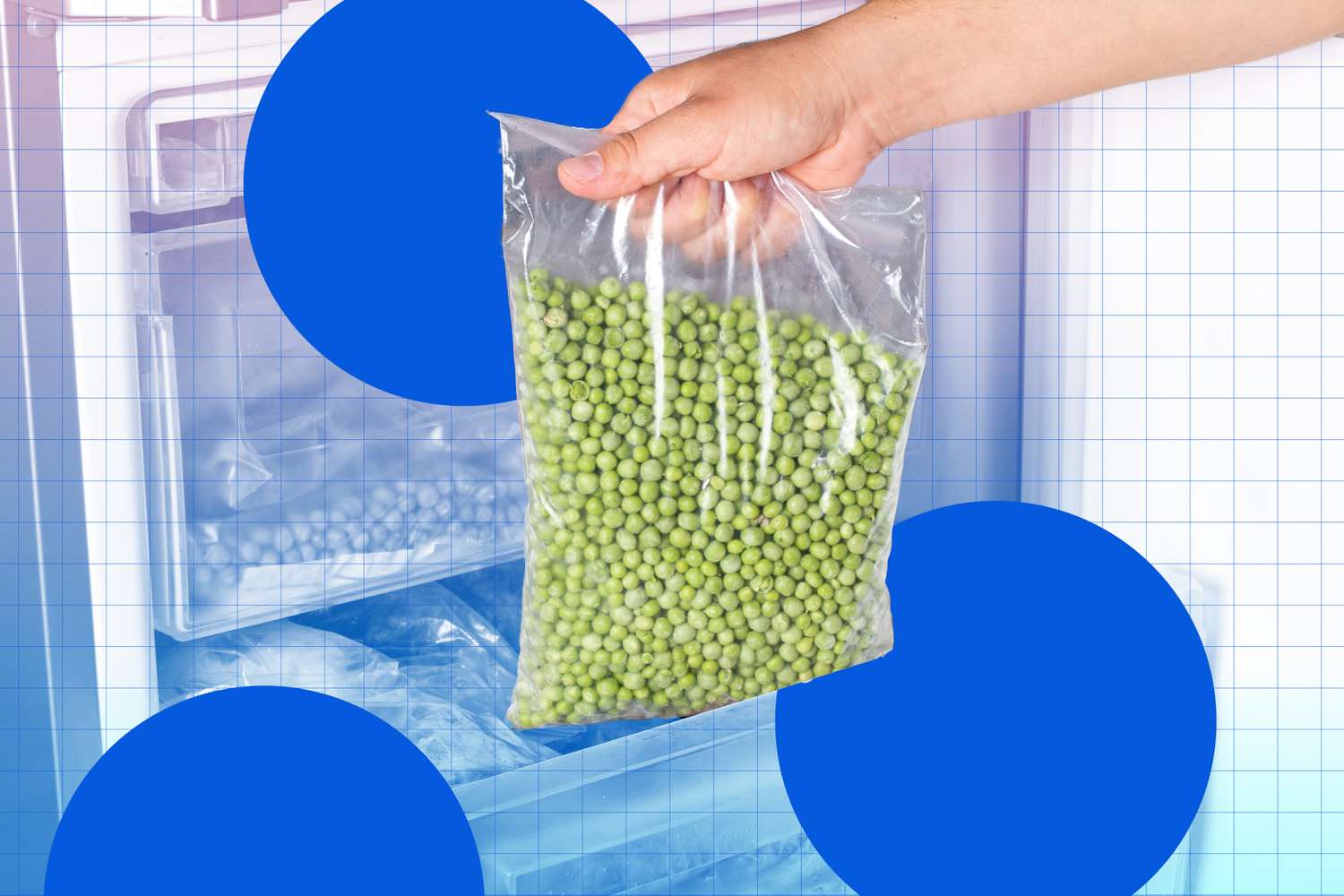Blog
The 6 Best Frozen Foods for Better Blood Pressure

- Nearly half of American adults have high blood pressure, but many don’t know it.
- The freezer aisle can be a convenient place to find foods for healthy blood pressure.
- Choose low-sodium foods that are high in magnesium, potassium, omega-3s and plant protein.
High blood pressure, or hypertension, strikes nearly half of American adults. Unmanaged, this silent disease can increase your risk of heart disease, stroke, kidney disease and loss of vision. Yet, because high blood pressure has no symptoms, many people don’t even know they have it.
Fortunately, a healthy diet can go a long way in managing high blood pressure or preventing it from developing in the first place. Research has shown that eating patterns that are low in sodium, yet high in fiber, plant protein, omega-3 fats, potassium and magnesium may help reduce blood pressure. And many healthy foods that contain these nutrients just happen to be available in the frozen food aisle.
That said, the freezer aisle is a big place! So, we asked dietitians to share the top frozen foods for healthy blood pressure. Keep reading to learn their favorites, plus easy ways to add them to your favorite meals.
1. Frozen Spinach
Veggies, like spinach, are one of the foundations of the blood pressure-lowering DASH diet. And they don’t always have to be fresh. “Frozen vegetable options are just as nutritious and sometimes more budget-friendly than fresh varieties,” says Kayla Farrell, RDN. “So, frozen spinach can be a good choice for blood pressure and heart health without worry of food waste.”
In addition to providing blood pressure-balancing minerals, like potassium, calcium and magnesium, frozen spinach also contains compounds called nitrates that may help lower blood pressure. In fact, research has linked regularly eating lots of nitrate-rich vegetables to a 4.8 mm Hg decrease in systolic blood pressure and a 1.7 mm Hg reduction in diastolic blood pressure. Eating lots of nitrate-heavy veggies may also reduce the risk of cardiovascular disease death by 37% to 49%.
Keep a bag or box of frozen spinach in your freezer. That way, you’ll always have it on hand to toss into everything from soups and casseroles to eggs and stir-fries.
2. Frozen Berries
Yes, fresh berries are delicious. But don’t overlook frozen berries. They’re frozen at peak ripeness, which locks in their nutrients. So, you can reap their benefits any time of year.
“Berries like blueberries, strawberries and raspberries are packed with antioxidants, fiber and vitamin C that are great at helping fight inflammation and supporting heart health,” says Farrell. Delicious, juicy berries also contain plant compounds, called polyphenols, which may support healthy blood pressure by keeping blood vessels relaxed and pliable. That may be one reason research has found that polyphenol-rich black currants, raspberries and blueberries may help reduce blood pressure in people with hypertension.
However, the strongest evidence is for blueberries, which contain a specific type of polyphenol called anthocyanins. “Studies suggest anthocyanins, the antioxidants that give blueberries their deep purplish blue color, support endothelial function, boost nitric oxide production and reduce inflammation, which are all key factors in managing blood pressure,” says Julie Pace, RDN. Research has found that daily blueberry consumption improved arterial stiffness in women with mild hypertension and vascular function in people with metabolic syndrome.
So, go ahead and toss a handful into your smoothie or oatmeal! Or, snack on them frozen for a delicious, frosty treat.
3. Frozen Edamame
“With plant-based protein and other micronutrients, like fiber, potassium, magnesium, iron and Vitamin C, edamame are a nutrient-dense, low-sodium food,” says Sarah Schlichter, M.P.H., RDN.
One cup of prepared, frozen edamame provides 24% of the Daily Value for magnesium and 14% of the DV for potassium. These two minerals have each been linked to lower blood pressure, but they are believed to work in different ways. For instance, magnesium helps your body produce nitric oxide, which relaxes blood vessels and improves blood flow. Then, potassium helps counteract the blood pressure-raising effects of sodium and supports blood vessel dilation.
Of course, you can always enjoy this nutritious freezer staple as a snack. But it’s also a tasty addition to stir-fries, soups, salads, casseroles or even blended into a protein- and fiber-rich dip.
4. Frozen Wild-Caught Salmon
“Seafood, especially fatty fish like salmon, is one of the best foods for heart health, as it contains omega-3 fatty acids that can help reduce inflammation and improve blood vessel function,” says Farrell. For the biggest omega-3 bang, choose wild-caught frozen salmon. It’s often higher in the omega-3 fats DHA and EPA, which have been linked to lower blood pressure and better heart health. And it has a more favorable omega-3 to omega-6 ratio than farmed salmon.
Wondering how many omega-3s you need to lower blood pressure? One large meta-analysis found that the optimal dose is between 2 and 3 grams per day, which you can get from one 4-ounce serving of cooked wild-caught Atlantic salmon. To save time, you can cook salmon from frozen. No need to thaw!
5. Frozen Beets
When it comes to blood pressure-lowering nitrates, you can’t do better than beets. While beets themselves haven’t been studied, beetroot juice, which is heavily concentrated in nitrates, has loads of research behind it. Numerous studies have found that beetroot juice may help lower systolic blood pressure (the first number in your blood pressure reading, which is most strongly correlated with heart health).
“Frozen beets are perfect for adding to smoothies, roasting or thawing for topping a colorful salad,” says Alyssa Northrop, M.P.H., RD. She loves using pre-prepped cubes of frozen beets to keep her fingers stain-free.
6. Frozen Peas
“Frozen green peas are an easy and [accessible] food for someone with high blood pressure,” says Patricia Kolesa, M.S., RDN. One study found that eating between ¾ and 1 cup of legumes, like peas, per day was associated with a 43% lower risk of high blood pressure. What makes these legumes so effective? For starters, they’re rich in fiber (6 grams per cup). Not bad, considering that research has found every additional 5 grams of fiber a person eats daily may lower their systolic blood pressure by 2.8 mm Hg and diastolic blood pressure by 2.1 mm Hg. In addition, peas contain plant protein (7 grams per cup), plus a cocktail of bioactive peptides and flavonols that have also been linked to lower blood pressure.
No wonder they’re a staple in nutritionists’ freezers! Stock up on a bag or two to thaw and toss into pasta, salads, quinoa, gnocchi and more.
HEART-HEALTHY RECIPES TO TRY
Our Expert Take
The freezer aisle is full of tasty, nutrient-rich foods that can support healthy blood pressure and reduce your risk of heart disease. Dietitians are big fans of frozen spinach, berries, edamame, beets, peas and salmon. These freezer staples are packed with nutrients linked to lower blood pressure, like potassium, magnesium, fiber, plant protein and omega-3 fatty acids.
When shopping, keep in mind that some brands may contain added salt, which can raise blood pressure. So, check the ingredient list and compare brands to find the lowest-sodium choices possible. Then load your cart and stock that freezer! Because small changes, like having these convenient, nutritious foods at your fingertips, can make a big difference in your blood pressure and your heart health.











